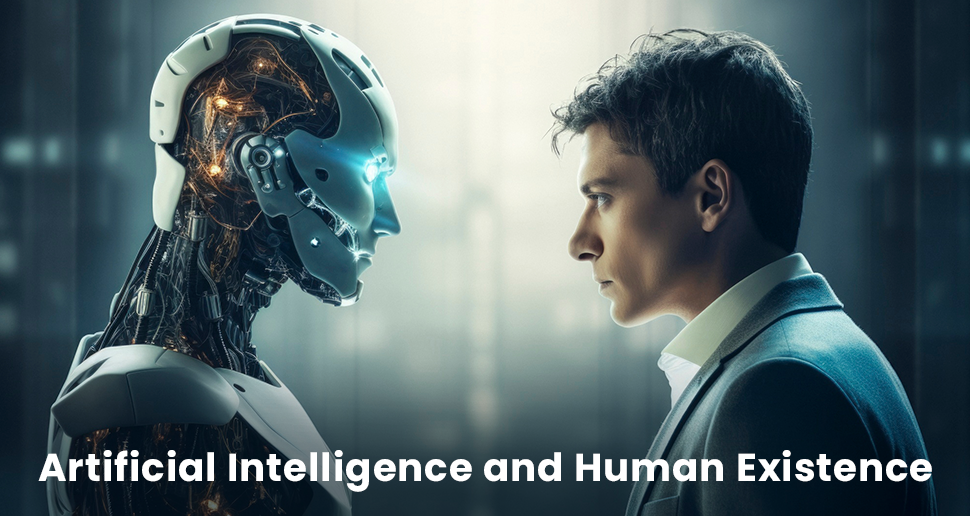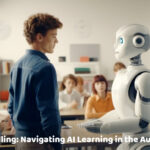Artificial Intelligence and Human Existence
Introduction to AI
The latest Artificial Intelligence (AI) technology uses the ability of machines to replicate and enhance human intellect through reasoning and learning from experience. As known, AI is used in computer programming for years before developing it into a virtual brain that can process information. Now, AI technology gets applied to a variety of products and services. For example, AI is used in digital cameras to help determine what objects are present in an image that uses AI software. AI uses techniques from probability theory, economics, and algorithm design to solve practical problems, which get modeled and trained from the human brain. Artificial intelligence and human existence is something that need to get pondered on for further perspectives and insights.
The Rise of AI: Catalyst for Transformation
After the arrival of AI, it has driven path-breaking innovations in many sectors that include the medical field, speech recognition, machine translation, computer vision, and voice transcription among others. The AI community of Seaford opens doors and promotes opportunities that enable humans to exist and function in a much simpler way than now. For instance, real-time closed captions empower people to become engaged in the content and participate better in group conversations. The rise of AI has become the catalyst for transformation as the technology assists individuals to learn and acquire new skills that enable those with non-traditional backgrounds to compete on equal-footing. The AI technology also empowers institutions that enable people to fulfill their talent through landing on jobs they seek.
Coexistence or Competition: AI in the Job Market
For human existence, it is essential to co-exist with AI technology. Artificial intelligence competes with humans in many job sectors and people should learn to use AI for our benefits rather than the opposite. AI plays a stellar role in enhancing productivity. It automates repetitive tasks and analyzes vast amounts of data while predicting the future based on patterns. Technology has become invaluable in sectors like healthcare, retail-manufacturing, and customer service. It unlocks hidden human potential through a collaborative approach and extends human existence to the future.
As the job market evolves, it becomes crucial for humans to adapt and develop skills that complement the AI technology. To compete and co-exist with AI in the job market, it becomes increasingly important for humans to stay relevant in the workforce up-to-date, re-skilling, and learning new skills. It is necessary to combine technical skills with emotional intelligence, communication, and adaptability to work with AI in the job-market and continue human existence. The integration of AI into the job market marks the simplification of many jobs by which productivity can be increased manifold. For human existence, humans should collaborate with AI to drive innovation. The analytical capabilities of AI get paired with unique human skills to create a more efficient and prosperous future.
Ethical Quandaries: Striking a balance in AI development
As AI ethics is dependent on varying values, it must be customized and tailored to the specific business and regulatory needs that are relevant to the company. There are several steps toward building a scalable, customized, operationable, and sustainable data and AI ethics program. It includes identifying existing infrastructure that a data and AI ethics program can leverage and creating a data and AI ethical risk framework that gets tailored to specific industrial needs.
To strike a balance in AI development, companies should formally and informally incentivize employees to play a role in identifying AI ethical risks. They should also monitor the impacts and engage stakeholders too to deal with the ethical quandaries. At Seaford, we focus on simplifying the ethical issues that gets associated with AI development.
AI as an extension of ourselves
The human-AI synergy works very well in the case of customer service as it is about forging genuine connections with customers. Humans bring in the much-needed emotional intelligence, empathy, and human-touch interactions to the integration between human and AI elements. Thus, AI works as an extension of the human brain.
The AI empowers human agents and works as a force multiplier. The technology of AI helps humans to learn and grow continuously, which results in building trust and loyalty. As an extension to humans, AI empowers humans to be more productive.
AI, Singularity, and Existential Questions
At Seaford, we focus on AI technology, singularity, and future existential questions. The AI singularity is the hypothetical future event wherein artificial intelligence surpasses human intelligence. It supposedly leads to the rapid and exponential increase in technological development.
The strengths of AI singularity include the potential for solving global challenges, improving life-quality, and accelerate technological advancements that lead to innovations and new industries. The weaknesses include the underestimation of risks and challenges of advanced AI systems. The AI singularity could be possible but not inevitable as per our studies at Seaford. AI and singularity have certain nuanced perspectives such as AI getting used as a collaborative tool, a competitive force, a potential threat, a driver of inequality, and as a force of good.
Seaford focuses on using AI to dispel any rumors regarding AI singularity and concerned existential questions from humans.
The Road Ahead: Shaping a Collective Future
Seaford, through AI, shapes a collective future with AI. The road ahead will be filled with technological innovations brought forth through the intelligent and prompt-based use of Artificial Intelligence technology.
Conclusion
The above-mentioned information focuses on the nuances of artificial intelligence in collaboration with human existence. Seaford helps to integrate AI services with human-services. Contact us at www.seaford.au to know more about us.




